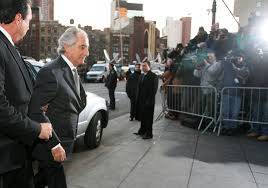The victims of Bernard L. Madoff's Ponzi scheme, one of the most notorious financial frauds in U.S. history, have received a significant measure of restitution. The Madoff Victim Fund (MVF), established by the U.S. Department of Justice, has completed its tenth and final distribution, disbursing over $131.4 million to more than 23,000 victims worldwide. This final payout brings the total compensation to over $4.3 billion, enabling victims to recover approximately 93.71% of their verified losses.
**Background on the Madoff Ponzi Scheme**
Bernard Madoff, once a respected financier and former chairman of the Nasdaq stock exchange, orchestrated the largest Ponzi scheme in history. Over several decades, Madoff defrauded thousands of investors, including individuals, charities, pension funds, and institutional clients, by promising consistent, high returns through a fraudulent investment advisory business. The scheme collapsed in December 2008 during the financial crisis when Madoff was unable to meet the increasing demands for withdrawals, leading to his arrest and subsequent confession. In 2009, Madoff pleaded guilty to 11 federal felonies and was sentenced to 150 years in prison. He died in prison in 2021.
**Establishment and Role of the Madoff Victim Fund**
In the aftermath of the scandal, the U.S. Department of Justice established the Madoff Victim Fund to facilitate the recovery and distribution of forfeited assets to the victims. The fund was overseen by Richard Breeden, a former chairman of the U.S. Securities and Exchange Commission, appointed as Special Master to manage the remission proceedings. The MVF's mission was to compensate victims by returning forfeited assets, ensuring equitable recovery for those affected by Madoff's crimes.
**Recovery Efforts and Distribution Process**
The MVF's recovery efforts were unprecedented in scope and complexity. The fund evaluated over 66,000 remission petitions, involving billions in cash flows, to compute each victim's fraud losses accurately. The recovered funds originated from several sources, including:
- **Jeffry Picower Estate**: Approximately $2.2 billion was collected from the estate of Jeffry Picower, a Madoff investor who profited significantly from the scheme.
- **JPMorgan Chase Settlement**: An additional $1.7 billion was obtained through a deferred prosecution agreement with JPMorgan Chase Bank N.A., which had banking relationships with Madoff's firm.
- **Other Recoveries**: Funds were also recovered from civil forfeiture actions against other investors and co-conspirators, including Carl Shapiro and members of the Madoff family.
These efforts culminated in the distribution of over $4.3 billion to 40,930 victims across 127 countries, achieving a recovery rate of nearly 94% of their verified losses.
**Additional Recoveries by the SIPA Trustee**
Parallel to the MVF's efforts, Irving Picard, the trustee appointed under the Securities Investor Protection Act (SIPA), managed the liquidation of Bernard L. Madoff Investment Securities LLC. Picard's team successfully recovered approximately $14.72 billion through litigation and settlements, further augmenting the total restitution to Madoff's victims.
**Impact on Victims**
The compensation process has provided substantial relief to a diverse group of victims, including individual investors, charitable organizations, educational institutions, and pension funds. Many of these victims faced financial ruin following the revelation of Madoff's fraud. The near-total recovery of their losses represents a significant achievement in the realm of financial restitution and underscores the commitment of U.S. authorities to pursue justice for victims of financial crimes.
**Conclusion**
The completion of the Madoff Victim Fund's distributions marks the end of a significant chapter in the aftermath of the Madoff Ponzi scheme. Through coordinated efforts involving asset recovery, legal proceedings, and meticulous distribution processes, victims have regained a substantial portion of their losses. This outcome serves as a testament to the resilience of the affected individuals and the determination of the justice system to address and rectify the consequences of large-scale financial fraud.


